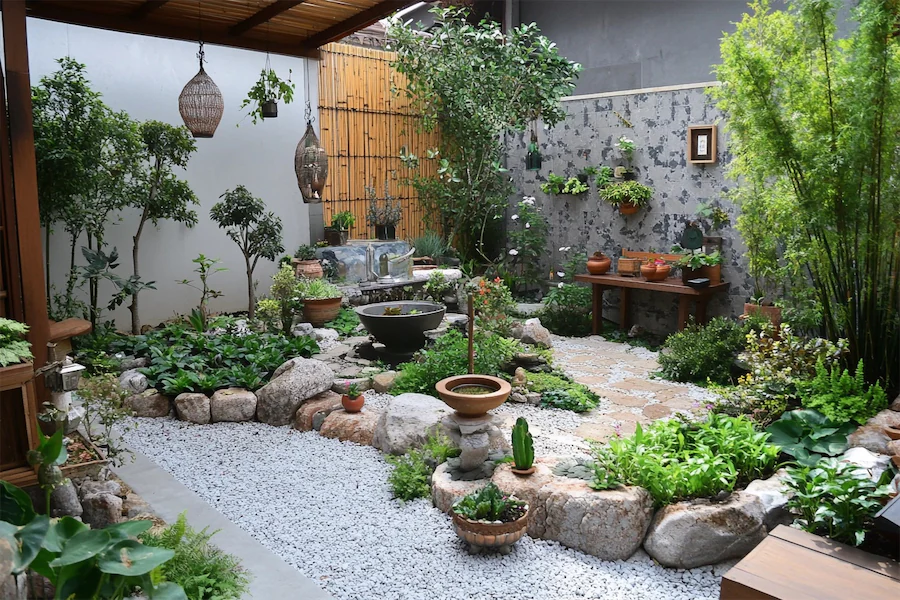A Feng Shui courtyard garden harmoniously blends traditional Chinese design principles with natural elements to create a balanced and tranquil outdoor space. Rooted in ancient practices, such gardens are meticulously arranged to promote the flow of positive energy, or “chi,” enhancing the well-being of those who inhabit the space.
History and Origins of Feng Shui Courtyard Gardens
The concept of the courtyard garden is integral to traditional Chinese architecture, notably exemplified by the Siheyuan, a historical type of residence commonly found in Beijing. A Siheyuan typically consists of a courtyard surrounded by buildings on all four sides, embodying the principles of Feng Shui to ensure harmony between the living space and the natural environment.
Key Features of a Feng Shui Courtyard Garden
- The Five Elements: A balanced Feng Shui garden incorporates the five elements—wood, fire, earth, metal, and water. Each element can be represented through various features:
- Wood: Manifested through plants, trees, and wooden structures.
- Fire: Symbolized by lighting, candles, or red-colored objects.
- Earth: Represented by rocks, soil, and pottery.
- Metal: Incorporated through metal sculptures, furniture, or ornaments.
- Water: Embodied by ponds, fountains, or other water features.
- Bilateral Symmetry: Emphasizing balance, traditional Chinese architecture often features bilateral symmetry, which is mirrored in garden design to create a sense of equilibrium.
- Enclosure and Privacy: Courtyard gardens are typically enclosed, providing a private and serene environment. This enclosure also aids in temperature regulation and ventilation.
- Natural Materials: The use of natural materials like wood, stone, and clay is prevalent, fostering a connection with nature and enhancing the garden’s authenticity.
Applications of Feng Shui Courtyard Gardens
Feng Shui courtyard gardens serve multiple purposes:
- Residential Spaces: They offer homeowners a peaceful retreat, promoting relaxation and well-being.
- Cultural and Historical Sites: Such gardens preserve traditional aesthetics and provide insight into historical architectural practices.
- Public Spaces: In urban areas, they offer communal spaces for reflection and social interaction, contributing to the community’s overall harmony.
Considerations When Designing a Feng Shui Courtyard Garden
- Orientation: Aligning the garden along a north–south axis, with the main entrance facing south, is traditional, as it maximizes sunlight exposure and aligns with Feng Shui principles.
- Plant Selection: Choosing plants that thrive in the local climate and represent positive symbols in Feng Shui, such as bamboo for resilience or plum blossoms for perseverance, is essential.
- Water Features: Incorporating water elements like ponds or fountains can enhance the flow of chi, but their placement and maintenance are crucial to avoid stagnation, which can lead to negative energy.
- Maintenance: Regular upkeep ensures that the garden remains a source of positive energy. Overgrown or neglected areas can disrupt the harmonious flow of chi.
Conclusion
A Feng Shui courtyard garden is more than just an aesthetic addition to a property; it is a thoughtfully designed space that fosters harmony between individuals and their environment. By integrating the principles of Feng Shui with careful planning and maintenance, such a garden can become a sanctuary that nurtures the mind, body, and spirit.
